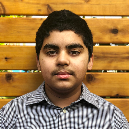
 Speaker "Shreyaan Pathak" Details Back
Speaker "Shreyaan Pathak" Details Back


-
Name
Shreyaan Pathak
-
Company
Microsoft
-
Designation
Data Scientist (Intern)
Topic
Skin Cancer detection using AI
Abstract
Skin cancer is one of the most common form of cancer in the United States of America. Providing the patient with a diagnosis at the point of primary care presents a major disruption to the conventional model of physician–patient interaction. AI systems could prove particularly useful in resource-limited settings where medical care is unavailable or costly. Such a system has the potential to detect skin cancer in people who might otherwise never visit a dermatologist, and for whom such a visit could save them from a life of debilitating loss or even death.
In this application, we build upon multiple convolutional networks using International Skin Imaging Collaboration (ISIC) 2018 data for skin lesion segmentation and melanoma diagnosis. The ISIC archive contains over 13,000 dermoscopic high quality images collected from leading clinical center. First, a Pix2PixGAN is trained to achieve background skin part removal and focus on lesion boundary detection. Second, a very deep neural network based on DenseNet architecture is trained to classify lesion images into benign and malignant categories.
Our Contributions: We made our model cross-demographic by removing the skin part of the images (using background removal techniques) . We made the model more accurate by focusing just on a lesion (using binary compression techniques). Our models can operate on an edge devices (ipad/iOS/android) without any internet access